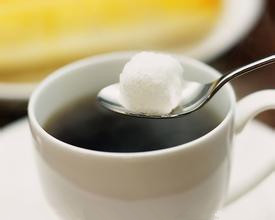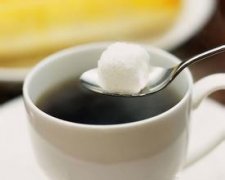Where does the bitterness in the coffee come from? Why is coffee bitter?

A cup of coffee is a complex drink made up of more than 30 chemicals, and it is these "compounds" that determine the taste, aroma and acidity of coffee. Since the 1930s, scientists have isolated and identified a variety of chemicals related to the sensory composition of coffee, but no one can figure out what makes coffee so bitter.
In order to solve this mystery, science continuously filters the brewed coffee. They found that a small portion of the filter products contained the lowest molecular weight and the most bitter compounds, which undoubtedly provided a goal for the research team to conduct in-depth analysis. Using mass spectrometry, the researchers determined that one of the compounds was chlorogenic lactone, a decomposition product of chlorogenic acid, which is found in almost all plants. The team then baked a range of drinks from regular coffee to bitter coffee and measured the amount of chlorogenic lactone in each coffee.
The researchers found that roasting coffee beans will produce a "continuous reaction". First, the chlorogenic acid in the coffee beans will be converted into chlorogenic acid lactone, which will be broken down into phenyl dihydrogenated indene if processing continues. Chlorogenic acid lactone can produce moderate bitterness in lightly or moderately roasted coffee, and the subsequent secondary decomposition products are the root cause of the "bitterness" of espresso.
Tips:
Although the bitterness in coffee seems inevitable, proper and correct extraction can effectively reduce the bitterness in coffee. So too bitter coffee is by no means a good cup of coffee. (this article is reproduced)
Important Notice :
前街咖啡 FrontStreet Coffee has moved to new addredd:
FrontStreet Coffee Address: 315,Donghua East Road,GuangZhou
Tel:020 38364473
- Prev

Coffee beans oil and freshness of the introduction of coffee basics
When we open a can of coffee beans, we sometimes see coffee beans wrapped in a thin layer of oil. It seems that the oil evenly distributed on the surface of coffee beans is not oil, but a water-soluble organic substance that looks like oil. Coffee oil itself contains a lot of coffee aroma components, can be dissolved in water, so you make good coffee surface and will not float a layer of greasy
- Next

Costa Rica Costa Rica is one of the major coffee producers in the world
Costa Rican coffee, with full grains, ideal acidity and unique strong flavor, Tarrazu of Costa Rica is one of the major coffee producing areas in the world. The coffee produced has a clear and pure flavor and pleasant aroma. Costa Rica, with its fertile volcanic soil and good drainage, is the first country in Central America to grow coffee and bananas for commercial value. Coffee and fragrance
Related
- Detailed explanation of Jadeite planting Land in Panamanian Jadeite Manor introduction to the grading system of Jadeite competitive bidding, Red bid, Green bid and Rose Summer
- Story of Coffee planting in Brenka region of Costa Rica Stonehenge Manor anaerobic heavy honey treatment of flavor mouth
- What's on the barrel of Blue Mountain Coffee beans?
- Can American coffee also pull flowers? How to use hot American style to pull out a good-looking pattern?
- Can you make a cold extract with coffee beans? What is the right proportion for cold-extracted coffee formula?
- Indonesian PWN Gold Mandrine Coffee Origin Features Flavor How to Chong? Mandolin coffee is American.
- A brief introduction to the flavor characteristics of Brazilian yellow bourbon coffee beans
- What is the effect of different water quality on the flavor of cold-extracted coffee? What kind of water is best for brewing coffee?
- Why do you think of Rose Summer whenever you mention Panamanian coffee?
- Introduction to the characteristics of authentic blue mountain coffee bean producing areas? What is the CIB Coffee Authority in Jamaica?

